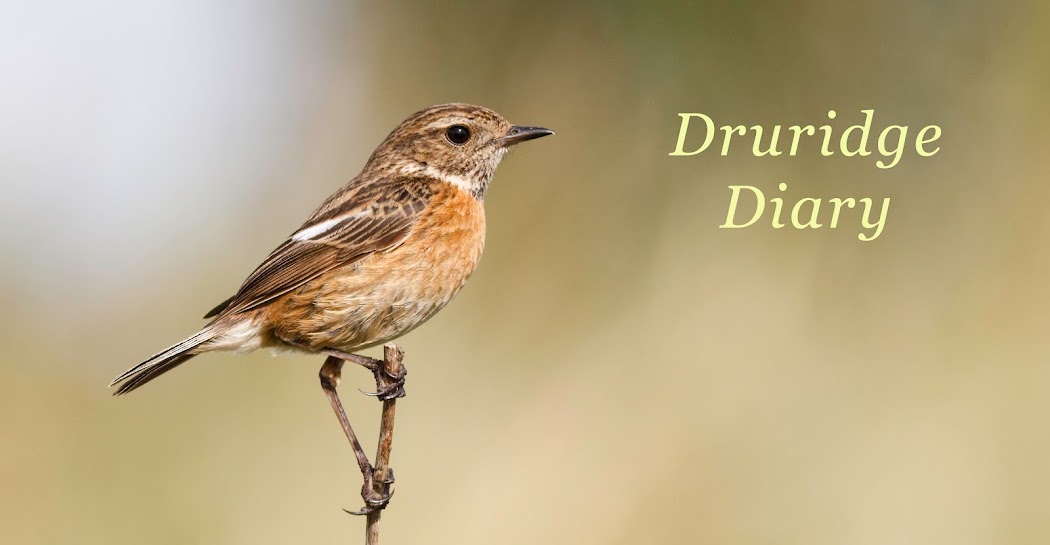I've been away gallivanting inland again this weekend with a trip to Holystone on Sunday so have neglected the patch again.
I was there first thing on Sunday morning. I started with a bit of viz-mig and a look on the sea - all quiet, the bushes were very quite too, almost everything other than the wrens and the odd Chiffhcaff singing. Reed Buntings sang in the dunes and Grasshopper Warbler was reeling, which is quite late for them. A couple of Little Egrets went north - all of a sudden there seems to be lots of Little Egrets on the coast, where have they all come from? Other than the resident Redshanks and Avocets still nurturing their young, the only wader was a single Black-tailed Godwit but the mud looked very dry.
On Saturday lunchtime I returned to 'The Post' and a look for some hovers. At the post I had a leafcutter bee coming and going with bits of leaf, never stopping longing to photograph and the Fork-tailed Flower Bees were going about their business. The wasp which I think is
Ancistrocerus scoticus showed briefly, enough for a photo or two and intriguingly the ruby-tailed wasp I saw last week was back and I got a very poor record shot. Two species of
Chrysis ruby-tailed wasps are known to be a kleptoparisite of this species - I need better photos of them both.
 |
| Ancistrocerus scoticus? |
 |
| Record shot of Chrysis species of ruby-tailed wasp |
 |
| Another wasp species headed for the post |
I had a look for hovers and found some wasps, all of which I need to identify if possible, but I think they might be tricky. No new hovers but these were interesting:
 |
| Eupeodes corollae (m) |
 |
| Cheilosia illustrata (f) |
I found this Four-banded Longhorn Beetle
Leptura quadrifasciata which is new for the patch for me.
 |
| Four-banded Longhorn Beetle Leptura quadrifasciata |
My first Small Copper of the year rested briefly for a record shot and this Drinker moth was in the dunes. I always think drinker moths are more like a small bat than a moth.
 |
| Small Copper butterfly |
 |
| Drinker moth |
These fine beasts all need ID...
 |
| Possibly Turnip Sawfly - Athalia rosae |
 |
| Possibly Dusona sp? |
 |
| I think that this is the female digger wasp that i have seen before? |
 |
| Ichneumonid of some species? |
This morning a
Pectoral Sandpiper was reported on the Budge fields. As I had to work and it was chucking it down with rain at lunchtime, I waited until this evening and the rain to stop to go and have a look. When I arrived another birder pointed it on the mud amongst the Dunlin. 'Pecs' are near annual at Druridge these days. The resident Avocet adult wouldn't let the Dunlin flock settle, chasing them as soon as they came near her so it was difficult to keep track of the Pec. She was even chasing the Pied Wagtails of which there were at least 30.
As I headed for home, I got a call from Ian Fisher to say that the
Cattle Egret that had been at Cresswell Pond for a couple of days head just landed on the Budge fields. I had seen an egret flying north as I passed Hemscotthill. I should stopped for a closer look. I went back but couldn't see the egret, so headed home to make tea. Seemingly it was seen later roosting in the bushes.



















































